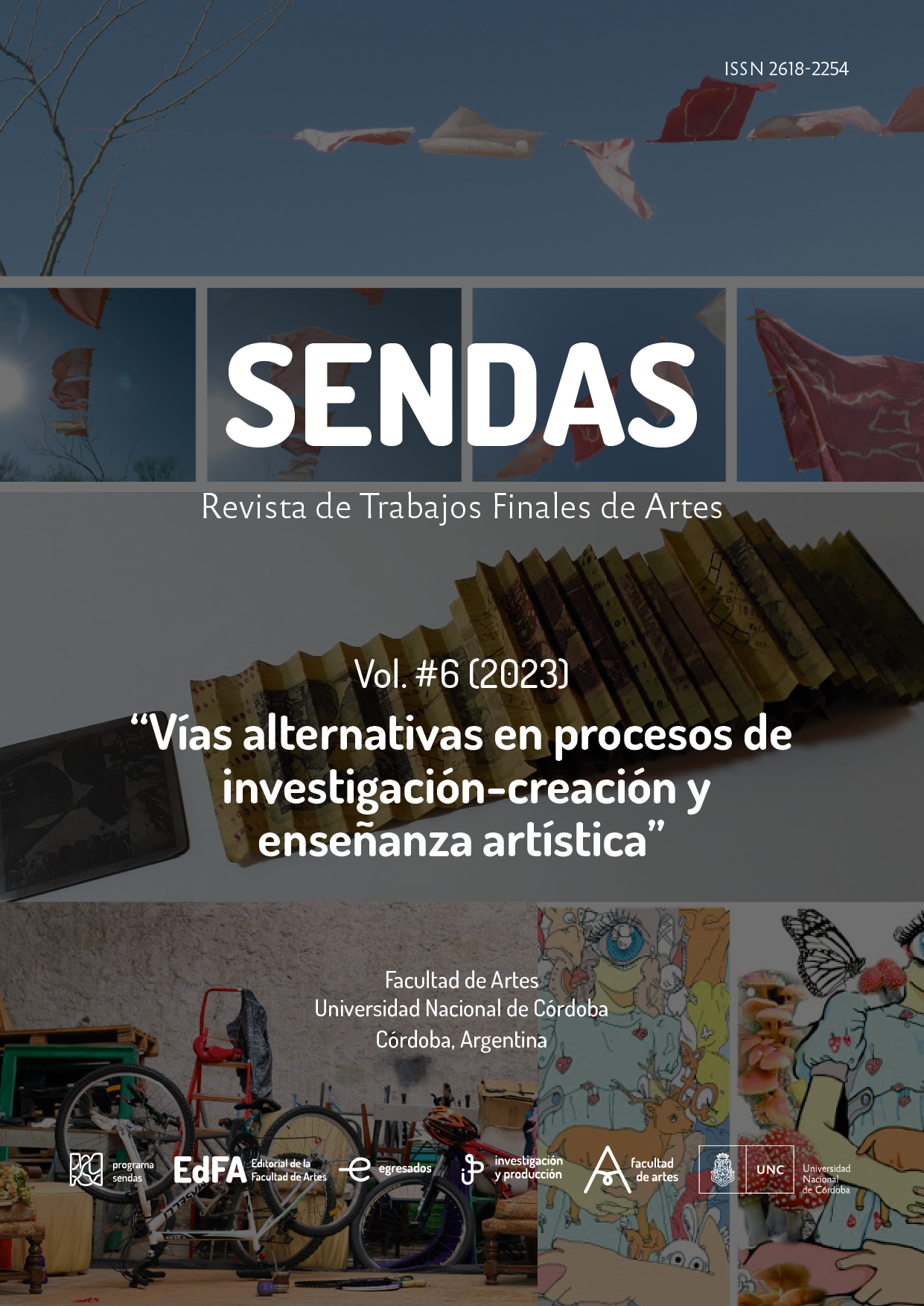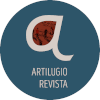Psycho-Pop Illustrations. Symptomatic and allegorical representations in an artistic process
Keywords:
digital art, ilustration, pop art, drawing, visual representationAbstract
The general objective of the problem to be developed, in the present Final Degree Project of the Degree in Painting, will be to carry out an inquiry process carried out in different stages, on various traditional artistic techniques in the visual arts together with digital tools, like Photoshop, that enable the construction or exploration around a discursive visuality. Through a series of illustrations, exploring the aesthetics or iconography of pop art, which allow me to narratively communicate said production in search of a visual translation of psychological conflicts or symptoms.
Downloads
References
Barthes, R. (1980). La cámara lúcida. Nota sobre la fotografía. Barcelona: Paidós.
Benjamin, W. (1989). La obra de arte en la época de su reproductibilidad técnica. En Discursos Interrumpidos I. Madrid: Taurus.
Bourlot, C. (2010). Pop Art: ¿el movimiento artístico de mayor cercanía con el pueblo? Creación y Producción en Diseño y Comunicación [Trabajos de estudiantes y egresados], 7 (35), pp. 93-97. https://www.palermo.edu/dyc//documentacion/creacion/creacion_32.html.
Brea, J. L. (2007). Noli me legere. Divertimentos del melancólico: el enfoque retórico y las alegorías de la ilegibilidad. Centro de Documentación y Estudios Avanzados en Arte Contemporáneo.
Bürger, P. (1995). Teoría de la vanguardia. Barcelona: Península.
Hodanny (2019). Grids para Instagram [aplicación móvil]. Google Play. https://play.google.com/store/apps/details?id=com.hodanny.instagrid&hl=es&gl=US
Lankshear, C. y Knobel, M. (2010). Remix digital: la nueva escritura global como hibridación sin límites. Semantic Scholar. https://www.semanticscholar.org/paper/Remix-digital%3A-la-nueva-escritura-global-como-sin-Lankshear-Knobel/ba9cea063f285d828e0c9404e4f75f930657e54c.
Masotta, O. (1968). Después del pop: nosotros desmaterializamos. En Conciencia y estructura. Buenos Aires: Ed. Jorge Álvarez.
Nussbaum, A. P. (2015). Guía de Bolsillo del DSM-5. Buenos Aires: Médica Panamericana.
Oliveras, E. (2009). La metáfora en el arte. Retórica y filosofía de la imagen. Buenos Aires: Emecé.
Ortega, R. (2014). Metodología para la ilustración desde el pensamiento creativo. Actas de Diseño, 17, pp. 245-248. https://fido.palermo.edu/servicios_dyc/publicacionesdc/actas_de_diseno/detalle_publicacion.php?id_libro=485#indice.
Pacheco, M. E. (2003) Jorge de la Vega: un artista contemporáneo. El Ateneo.
Prada M. J. (2000). El museo sin paredes: Los recursos de arte en Internet. Educación y biblioteca, 12(115), pp. 28-31. http://hdl.handle.net/10366/118663.
Prada M. J. (2009). Web 2.0’ as a new context for artistic practices. Fibreculture-The Journal, 14. http://fourteen.fibreculturejournal.org/fcj-098-web-2-0-as-a-new-context-for-artistic-practices/print/.
Prada M. J. (2010). La condición digital de la imagen. Lúmen_ex http://www.juanmartinprada.net/textos/martin_prada_j_la_condicion_digtal_de_la_imagen_2010.pdf.
Prada M. J. (2013). Otra época, otras poéticas. Algunas consideraciones sobre el arte actual [conferencia]. I Congreso Nacional de Investigadores en arte. El arte necesario. La Investigación Artística en un Contexto de Crisis. Universitat Politècnica de València https://www.juanmartinprada.net/textos/martin_prada_juan_otra_epoca_otras_poeticas.pdf
Rodeolyn (2016). Grete Stern. Archivo de ilustración Argetina-Fadu/UBA. Revista Idilio. https://ilustracion.fadu.uba.ar/2016/05/22/grete-stern-revista-idilio/
Downloads
Published
Issue
Section
License
Copyright (c) 2023 Sendas

This work is licensed under a Creative Commons Attribution-NonCommercial-ShareAlike 4.0 International License.
Commercial use of the original work and any derivative works is not permitted, and distribution of derivative works must be made under a license equal to that which governs the original work.







